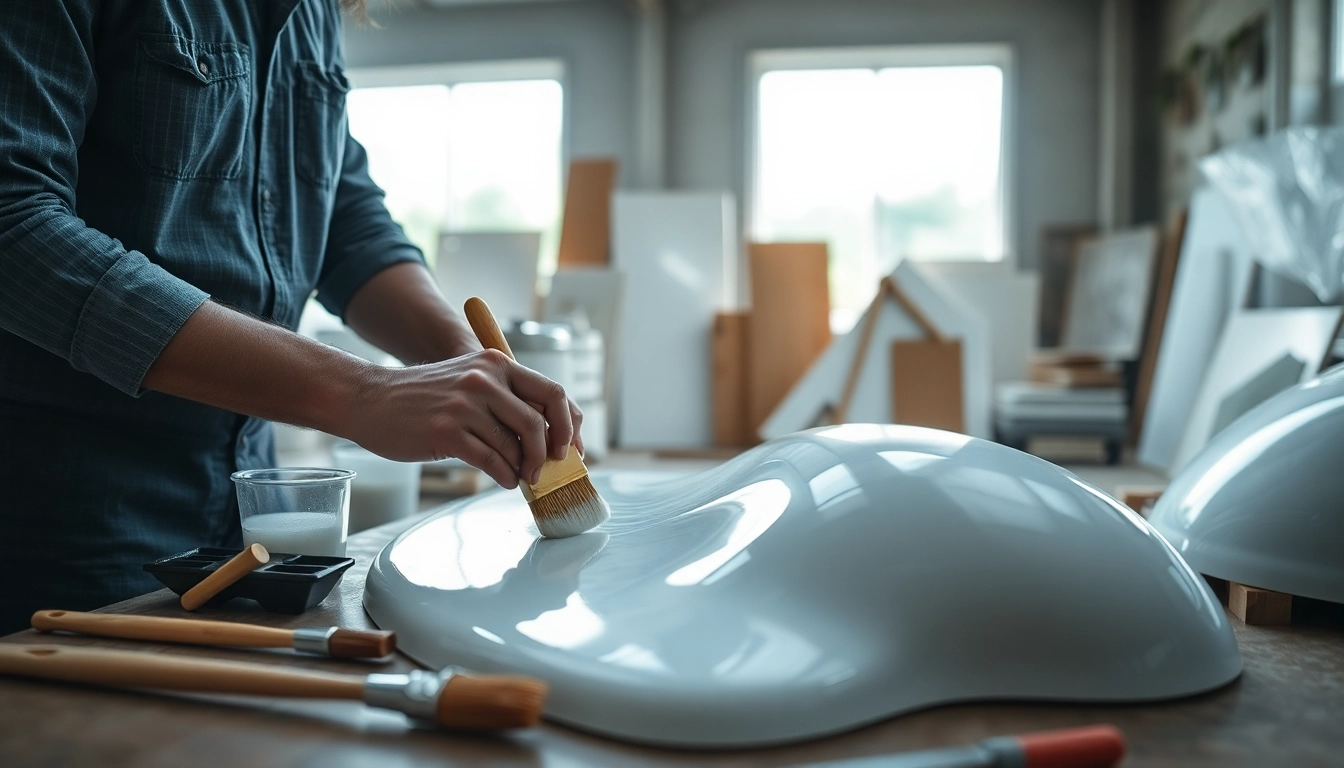Understanding Laminating Resin
What is Laminating Resin?
Laminating resin serves as a crucial material in various applications, particularly in the manufacturing of composite products. It is primarily used to bind layers of material together, such as fiberglass and other reinforcement fabrics, to create a composite laminate that is both strong and lightweight. Typically, laminating resins are classified into two main types: polyester and epoxy. These resins work by undergoing a chemical curing process, transforming from a liquid state into a solid form that provides structural integrity.
The composition of laminating resin varies; polyester laminating resin is derived from unsaturated polyesters, whereas epoxy laminating resin is formulated from epoxy compounds. Each type offers distinct properties suitable for different applications. Laminating resin is used extensively in industries ranging from marine to automotive, and even in the construction of furniture and sports equipment. For more detailed information on specific types of laminating resin, you can explore dedicated resources laminating resin.
Types of Laminating Resin
Understanding the types of laminating resin available is key to selecting the right one for your specific needs. The two primary categories are polyester and epoxy laminating resins, each with its unique characteristics.
Polyester Laminating Resin
This type of resin is known for its affordability and ease of use. It consists of a resin component and a hardener (catalyst) that, when mixed, leads to a quick curing process. Polyester laminating resin is particularly effective for projects that require a lightweight solution, such as in boat construction or the manufacturing of automotive components. However, one limitation is its relatively lower strength and chemical resistance compared to epoxy.
Epoxy Laminating Resin
Epoxy laminating resins offer superior strength and adhesion properties. They have a longer curing time, which allows for a more controlled application. This type is more resistant to environmental conditions, making it ideal for applications subject to moisture, chemicals, and varying temperatures. Epoxy resins are often the preferred choice in aerospace and high-performance automotive applications due to their enhanced durability and performance characteristics.
Common Uses of Laminating Resin
Laminating resin finds applications across a diverse range of industries. Each sector utilizes the unique properties of these resins to meet specific performance requirements.
Marine Industry
In the marine industry, laminating resin is extensively used for constructing boats, yachts, and other watercraft. The resin binds fiberglass fabrics to create robust hulls and deck components that can withstand harsh marine environments.
Automotive Production
In automotive manufacturing, laminating resin is employed in producing lightweight body panels and structural components. This contributes to improved fuel efficiency and performance while maintaining safety standards.
Construction Applications
The construction sector often employs laminating resin in creating composite materials for beams, columns, and other structural components. These applications highlight the resin’s ability to provide high strength-to-weight ratios, essential for modern architectural designs.
Benefits of Using Laminating Resin
Durability and Strength
One of the primary benefits of laminating resin is its durability. Once cured, the resin forms a strong, hard surface that can endure significant stress and impact. This durability is especially beneficial in applications where exposure to physical forces is common, such as in marine or automotive environments.
Chemical Resistance
Laminating resins offer high resistance to various chemicals, including solvents, acids, and alkaline substances. This property ensures that products made with laminating resin maintain their integrity and performance even when exposed to harsh substances, making it an excellent choice for industrial and marine applications.
Cost-Effectiveness
The cost-effectiveness of laminating resin is another significant advantage. Compared to alternative materials, laminating resins are typically lower in cost and can provide a better price-performance ratio. This aspect is particularly crucial for large-scale production processes where material costs can significantly impact overall project budgets.
Best Practices for Working with Laminating Resin
Preparation and Mixing
Proper preparation and mixing of laminating resin are critical for achieving optimal results. Start by ensuring that all surfaces to be laminated are clean and free from contaminants. This includes dust, oil, and moisture. When mixing the resin and hardener, adhere closely to the manufacturer’s instructions regarding ratios and mixing times, as improper mixing can negatively impact the curing process and final product strength.
Application Techniques
Application methods can vary based on the project requirements. Common techniques include brushing, rolling, or using a spray system. Ensure an even application by layering the resin and reinforcement materials without air pockets. It’s essential to work quickly once the resin has been mixed to prevent premature curing and to achieve the best adhesion between layers.
Curing and Post-Application Steps
Curing is a pivotal step in the application process. Allow adequate time for the resin to fully cure in a controlled environment to achieve maximum strength and durability. After curing, perform post-application checks, such as sanding or finishing as needed, to ensure a smooth and appealing surface.
Troubleshooting Common Issues with Laminating Resin
Dealing with Bubbles
Bubbles can form during the mixing and application of laminating resin, negatively impacting the final appearance and functionality. To minimize bubble formation, ensure that the resin and hardener are mixed slowly and thoroughly. If bubbles do form, they can generally be eliminated through gentle heat application or by allowing sufficient time for them to rise to the surface during the curing process.
Preventing Surface Imperfections
Surface imperfections, such as uneven thickness or rough spots, can also occur. These can be largely prevented by ensuring a proper application technique and working in a clean environment. If issues arise, they can often be addressed by sanding and refinishing after the resin has cured.
Storage and Shelf Life Concerns
Proper storage of laminating resin is vital to maintaining its quality and effectiveness. Most laminating resins have a shelf life that can be affected by exposure to heat, humidity, and sunlight. Always store resin according to the manufacturer’s recommendations, typically in a cool, dry place, and always check for any signs of deterioration before use.
Future Trends in Laminating Resin Technologies
Sustainability in Resin Production
As industries increasingly prioritize sustainability, the future of laminating resin production is leaning towards developing eco-friendly formulations. Biobased resins and those derived from renewable sources are becoming more prevalent, leading the way in reducing environmental impact.
Advancements in Formulation
Technological advancements are continually leading to improved formulations of laminating resin, enhancing properties such as UV resistance, flexibility, and strength. Research in nanotechnology is also paving the way for innovative types of laminating resin capable of meeting specialized demands.
Innovative Applications in Various Industries
Innovation is driving the exploration of new applications for laminating resin across multiple industries. From the creation of smart materials that can change properties in response to environmental conditions to the integration of laminating resin in emerging fields such as renewable energy, the possibilities are extensive.



